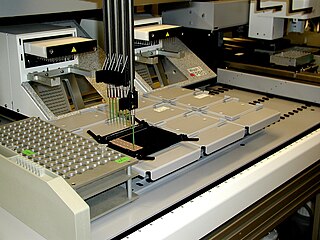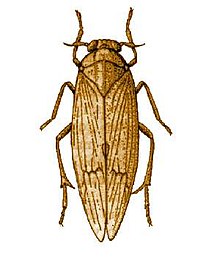
Rice is a cereal grain, and in its domesticated form is the staple food for over half of the world's human population, particularly in Asia and Africa, due to the vast amount of soil that is able to grow rice. Rice is the seed of the grass species Oryza sativa or, much less commonly, O. glaberrima. Asian rice was domesticated in China some 13,500 to 8,200 years ago, while African rice was domesticated in Africa some 3,000 years ago. Rice has become commonplace in many cultures worldwide; in 2021, 787 million tons were produced, placing it fourth after sugarcane, maize, and wheat. Only some 8% of rice is traded internationally. China, India, and Indonesia are the largest consumers of rice. A substantial amount of the rice produced in developing nations is lost after harvest through factors such as poor transport and storage. Rice yields can be reduced by pests including insects, rodents, and birds, as well as by weeds, and by diseases such as rice blast. Traditional polycultures such as rice-duck farming, and modern integrated pest management seek to control damage from pests in a sustainable way.

Proteomics is the large-scale study of proteins. Proteins are vital parts of living organisms, with many functions such as the formation of structural fibers of muscle tissue, enzymatic digestion of food, or synthesis and replication of DNA. In addition, other kinds of proteins include antibodies that protect an organism from infection, and hormones that send important signals throughout the body.

Insecticides are pesticides used to kill insects. They include ovicides and larvicides used against insect eggs and larvae, respectively. Insecticides are used in agriculture, medicine, industry and by consumers. Insecticides are claimed to be a major factor behind the increase in the 20th-century's agricultural productivity. Nearly all insecticides have the potential to significantly alter ecosystems; many are toxic to humans and/or animals; some become concentrated as they spread along the food chain.

Integrated pest management (IPM), also known as integrated pest control (IPC) is a broad-based approach that integrates both chemical and non-chemical practices for economic control of pests. IPM aims to suppress pest populations below the economic injury level (EIL). The UN's Food and Agriculture Organization defines IPM as "the careful consideration of all available pest control techniques and subsequent integration of appropriate measures that discourage the development of pest populations and keep pesticides and other interventions to levels that are economically justified and reduce or minimize risks to human health and the environment. IPM emphasizes the growth of a healthy crop with the least possible disruption to agro-ecosystems and encourages natural pest control mechanisms." Entomologists and ecologists have urged the adoption of IPM pest control since the 1970s. IPM allows for safer pest control.

Leafhopper is the common name for any species from the family Cicadellidae. These minute insects, colloquially known as hoppers, are plant feeders that suck plant sap from grass, shrubs, or trees. Their hind legs are modified for jumping, and are covered with hairs that facilitate the spreading of a secretion over their bodies that acts as a water repellent and carrier of pheromones. They undergo a partial metamorphosis, and have various host associations, varying from very generalized to very specific. Some species have a cosmopolitan distribution, or occur throughout the temperate and tropical regions. Some are pests or vectors of plant viruses and phytoplasmas. The family is distributed all over the world, and constitutes the second-largest hemipteran family, with at least 20,000 described species.

A planthopper is any insect in the infraorder Fulgoromorpha, in the suborder Auchenorrhyncha, a group exceeding 12,500 described species worldwide. The name comes from their remarkable resemblance to leaves and other plants of their environment and that they often "hop" for quick transportation in a similar way to that of grasshoppers. However, planthoppers generally walk very slowly. Distributed worldwide, all members of this group are plant-feeders, though few are considered pests. The infraorder contains only a single superfamily, Fulgoroidea. Fulgoroids are most reliably distinguished from the other Auchenorrhyncha by two features; the bifurcate (Y-shaped) anal vein in the forewing, and the thickened, three-segmented antennae, with a generally round or egg-shaped second segment (pedicel) that bears a fine filamentous arista.

Delphacidae is a family of planthoppers containing about 2000 species, distributed worldwide. Delphacids are separated from other "hoppers" by the prominent spur on the tibia of the hindleg.

Eurybrachidae is a small family of planthoppers with species occurring in parts of Asia, Australia and Africa. They are remarkable for the sophistication of their automimicry.

The brown marmorated stink bug is an insect in the family Pentatomidae, native to China, Japan, Korea, and other Asian regions. In September 1998, it was collected in Allentown, Pennsylvania, where it is believed to have been accidentally introduced. The nymphs and adults of the brown marmorated stink bug feed on over 100 species of plants, including many agricultural crops, and by 2010–11 had become a season-long pest in orchards in the Eastern United States. In 2010, in the Mid-Atlantic United States, $37 million in apple crops were lost, and some stone fruit growers lost more than 90% of their crops. Since the 2010s, the bug has spread to countries such as Georgia and Turkey and caused extensive damage to hazelnut production. It is now established in many parts of North America, and has recently become established in Europe and South America.
Rice grassy stunt virus (RGSV) is a plant pathogenic virus transmitted by the brown planthopper, Nilaparvata lugens, and two other Nilaparvata species, N. bakeri and N. muiri.
Rice ragged stunt virus (RRSV) is a plant pathogenic virus of the family Reoviridae.

Male accessory glands (MAG) in humans are the seminal vesicles, prostate gland, and the bulbourethral glands. In insects, male accessory glands produce products that mix with the sperm to protect and preserve them, including seminal fluid proteins. Some insecticides can induce an increase in the protein content of the male accessory glands of certain types of insects. This has the unintended effect of increasing the number of offspring they produce.

Metcalfa pruinosa, the citrus flatid planthopper, is a species of insect in the Flatidae family of planthoppers first described by Thomas Say in 1830.

Peregrinus maidis, commonly known as the corn planthopper, is a species of insect in the order Hemiptera and the family Delphacidae. It is widespread throughout most tropical and subtropical regions on earth, including southern North America, South America, Africa, Australia, Southeast Asia and China. P. maidis are a commercially important pest of maize and its relatives. In addition to physical plant damage, P. maidis is the vector for several species-specific maize viruses, including maize stripe virus, maize mosaic virus and the non-pathogenic Peregrinus maidis reovirus.
Epiricania melanoleuca is a moth in the family Epipyropidae. It was described by Thomas Bainbrigge Fletcher in 1939. It is found in India, where its larvae are external parasitoids of the sugarcane planthopper. It has been used in biological pest control against this pest.

Stobaera is a genus of delphacid planthoppers in the family Delphacidae. There are about 14 described species in Stobaera.

Sogatella is a genus of delphacid planthoppers in the family Delphacidae. There are more than 20 described species in Sogatella.

Pardosa pseudoannulata, a member of a group of species referred to as wolf-spiders, is a non-web-building spider belonging to the family Lycosidae. P. pseudoannulata are wandering spiders that track and ambush prey and display sexual cannibalism. They are commonly encountered in farmlands across China and other East Asian countries. Their venom has properties that helps it function as an effective insecticide, and it is, therefore, a crucial pesticide control agent.
Oryza eichingeri is a species of wild rice in the family Poaceae, with a disjunct distribution in Ivory Coast, Republic of the Congo, Democratic Republic of the Congo, Uganda, Kenya, Tanzania, and Sri Lanka. It is being studied as a source of genes for resistance to the brown planthopper, an important pest of cultivated rice.

Megamelus scutellaris, the water hyacinth planthopper, is a true bug native to South America. It is used as a biological control agent to manage and reduce the spread of the water hyacinth, an invasive aquatic plant native to South America that has invaded many freshwater systems globally.















